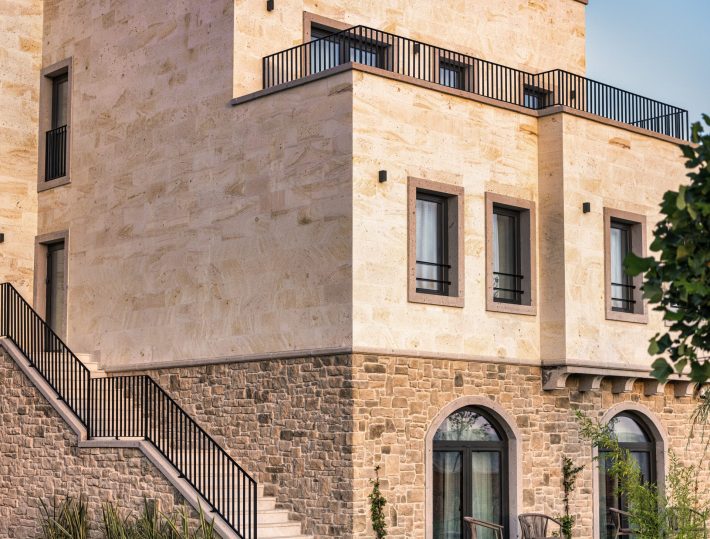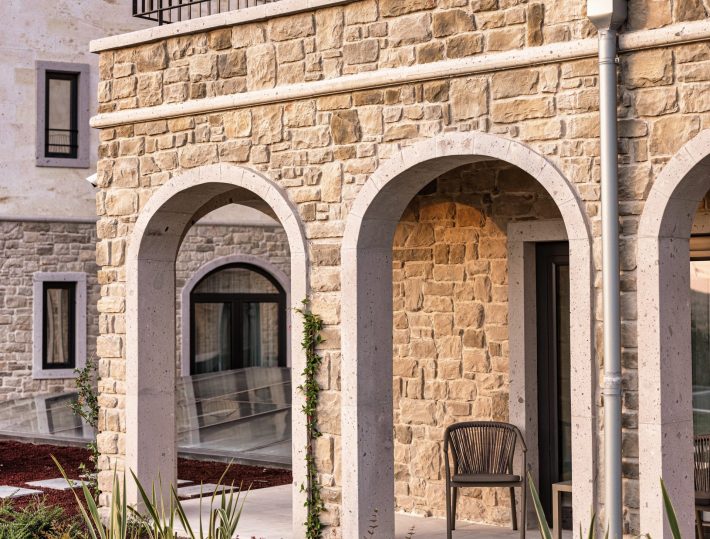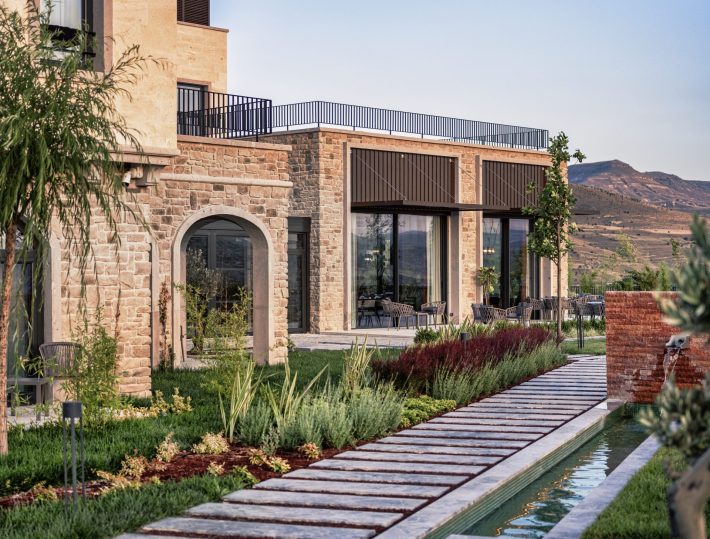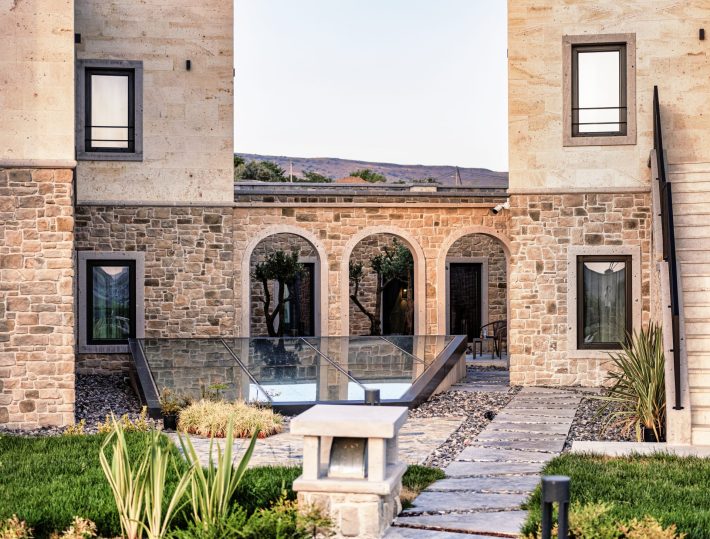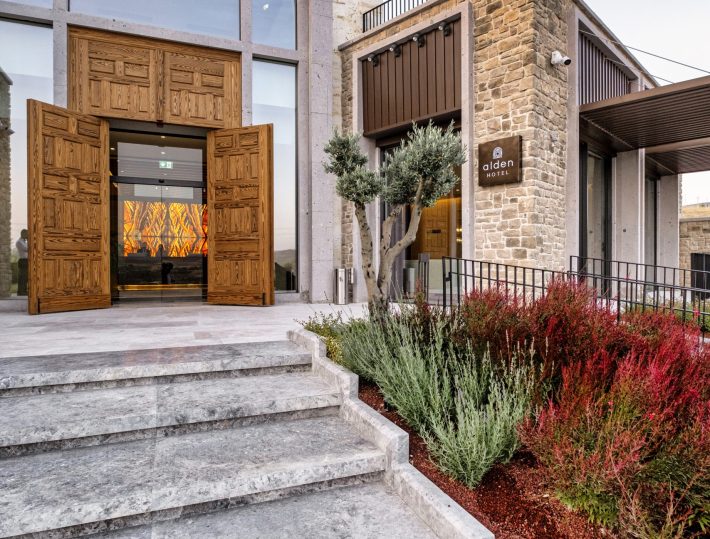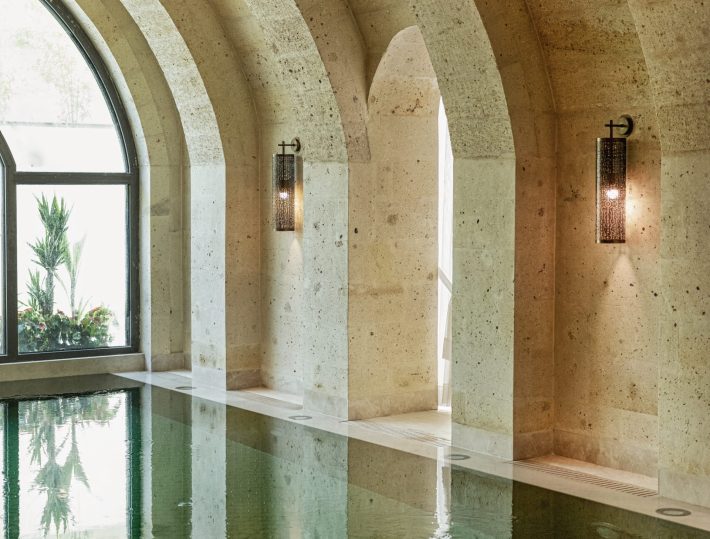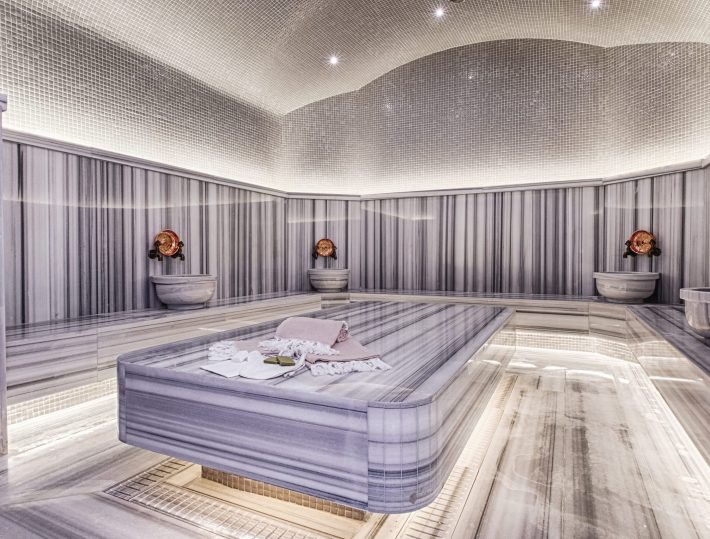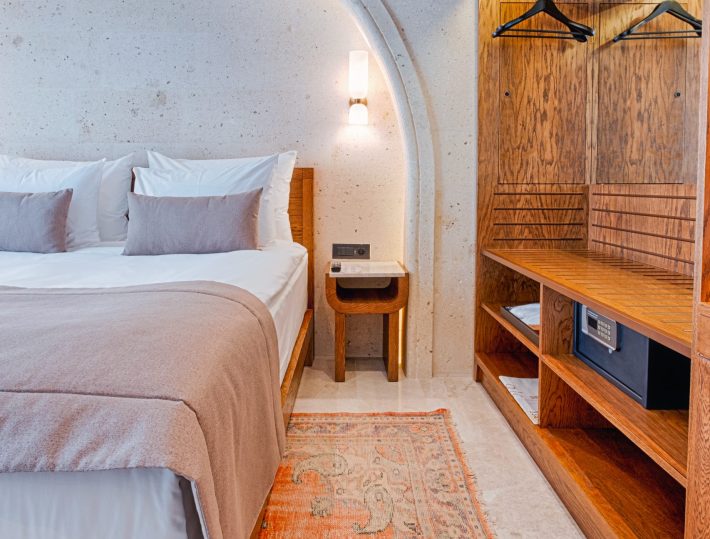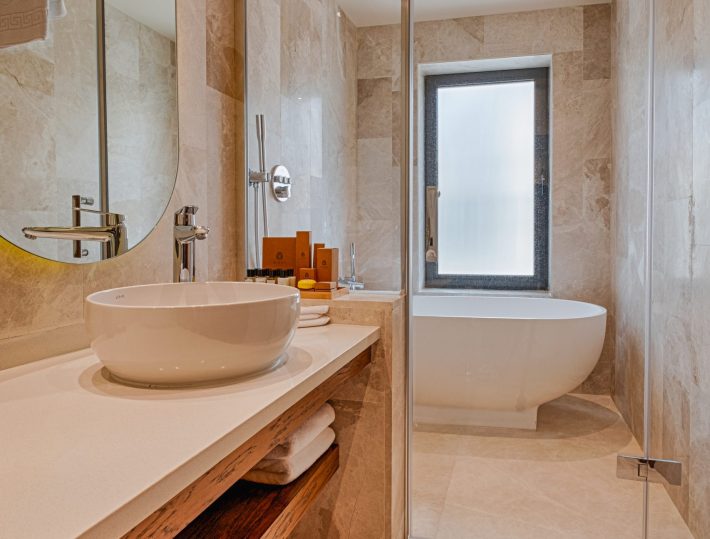Cappadocia Alden Hotel is located in Ürgüp, Cappadocia, with its architectural design created by Cofact Architecture and Engineering, and the interior design revealed by Onk Design. The project offers a contemporary interpretation of the “identity” formed by the conventional masonry method on slightly sloping land. Traditional stone mansion architecture and the layered mass movements it… View Article
Cappadocia Alden Hotel is located in Ürgüp, Cappadocia, with its architectural design created by Cofact Architecture and Engineering, and the interior design revealed by Onk Design. The project offers a contemporary interpretation of the “identity” formed by the conventional masonry method on slightly sloping land. Traditional stone mansion architecture and the layered mass movements it creates are the main elements that give the project its locality. The accommodation blocks, appearing to settle spontaneously on the land according to the landscape and plan solution, constitute the basic elements of the local identity. Stone from local quarries is processed and cut to various sizes, placed on the façade using cut stone to give the upper floors a “headroom” like impression. On the garden floors, rubble stone is applied as in the traditional process. The “stone mansion” architecture unique to Cappadocia aims to provide guests with a local mansion experience rather than a city hotel, with its strong character and associative imagery. Considering the conditions of the time and the intended use of the building by guests, some comfort criteria gain importance. Considering that guests will come from different parts of the world, an interior design in line with universal design principles has emerged.
Cappadocia Alden Hotel, consisting of four mansions and a service building, reinterprets the architecture of Cappadocia with its orientation, the spaces between the buildings, the three dimensions connected by arches, emulating local architecture, adopting traditional architecture, but with its way of being and its unique details, it has an appearance that is too original to imitate. What was learned from Kayadam architecture, underground cities, and traditional Cappadocian mansions were the main elements that helped to create the project’s spirit. Integrating all these local and “architecture without an architect” products with five-star comfort and service standards, not to take away the feeling of being in the region when guests return to the hotel, but to host them in spaces that give pleasure and peace on another level, are among the design concerns of the architecture as well as the interior architecture and landscape.
Stone floors built with masonry technique and wooden beams, roofs without eaves, terraces spread over different levels, and steep stairs connecting them, vaulted iwans, and arched windows have been important components of the traditional building. The most important reflection of not acting contrary to the region’s spirit is the development and interpretation of the construction technique to allow these components to exist in the building and to fit a much more universal and wide program. The terraces, which are accessed from almost every room in the building and spread over every level, are also used to meet the need for open and semi-open spaces. By connecting these terraces, it was possible to create accommodation units that are independent of each other and connected to different floors.
The main purpose of the design is to reinterpret the idea of a “Cappadocia Mansion”. The point where the mansion idea meets the hotel function divides the hotel into stages by dividing the number of rooms proportionally to the number of mansions. The search for a mass in a form that can respond to capacity decreases and increases from time to time in a region where the tourism season is open for almost 12 months supports the idea of a “mansion” again. The vertical separation of the accommodation units and all social, technical, and common areas allows them to coexist in the same space with contrasts such as dynamic/dynamic, loud/quiet, and common/private space.

